Text

Here’s a post with links to all of the cases I’ve reported on—

Blanche Monnier (1901)

.

.

.

.

.

The Icebox Murders (1965)

Ted Bundy (1974)
Etan Patz (1979)

The Weepy Voiced Killer (1980)
Angela Samota (1984)
April Tinsley (1988)

.

Danielle Nicole van Dam (2002)

.

.
8 notes
·
View notes
Text
Story of the Icebox Murders
TW: remains
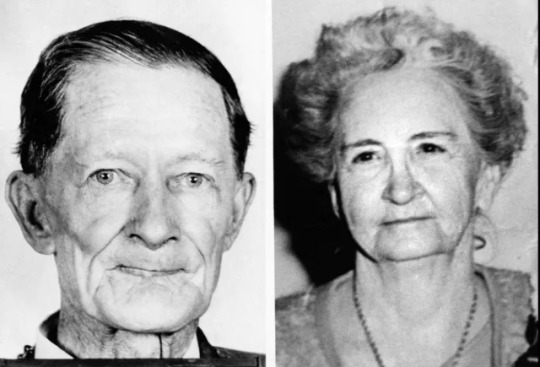
Fred & Edwina Rogers
On June 23, 1965; Marvin, Edwina Rogers' nephew, called the Houston police department in Houston, Texas to perform a welfare check on his aunt. He told them that his calls had been going unanswered for a few days at that point. Two officers were sent to the home to verify the wellness check and were met unanswered. They forced themselves into the home and found nothing odd besides noticing there was food sitting on the table. One of the officers opened the ice box and had noticed a bunch of washed, cut, and unpackaged meat cuts stacked on the shelves. The officer says he thought that the meat was from a butchered hog, but noticed two human heads through the clear glass of the vegetable bin. The heads were then verified to be those of Fred and Edwina Rogers. The meat, previously thought to be hogs meat, were the dismembered limbs and torsos of the elderly couple. It was also discovered that some of their organs had been cut up and flushed down the toilet.

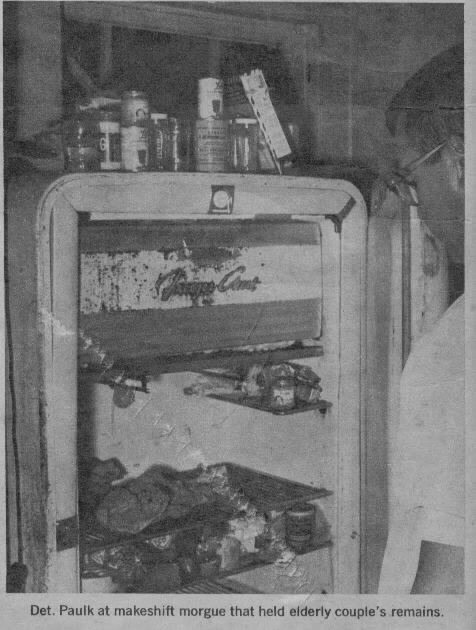
The day of their death was June 20, 1965, which was father’s day. An autopsy later showed that Fred was killed by blows to the head caused by a claw hammer. His eyes were gouged out and his genitalia was missing. Edwina had been beaten and brutalized. She was shot in the head execution style. It was also stated that the bodies were dismembered upstairs in the bathroom by someone with knowledge of anatomy. There were traces of blood found throughout the house and it had appeared to have been cleaned, except for a small drop of blood on the keyhole of Fred and Edwina’s 43-year-old son, Charles Rogers. Most neighbors weren’t aware that Charles even lived at the home, as he left before dawn and returned after dark if he left the home. He was also reclusive and communicated with his parents via slipping notes underneath his bedroom door. In Charles’ room, a keyhole saw was found and it was stained with blood. After this, a warrant was issued for Charles’ arrest as a material witness to the crime.

Charles Rogers
The medical examiner of the case said that whoever committed the crimes, took their time and knew what they were doing. It was also noted that the dismembering was “a fairly neat job.” After a nationwide manhunt, Charles Rogers was declared legally dead in 1975.
In 1977, a Houston couple; Hugh and Martha Gardenier, started investigating the still open, but cold, case. They believe that Charles did it and all evidence points towards him as well. The Gardeniers wrote that Charles was emotionally and physically abused by his parents well into his adulthood. They even found that Edwina had possibly been forging his signature onto deeds for land and to take out loans. They thought that Edwina and Fred were pocketing the loans and they saw that their house was in Charles’ name and not under Fred and Edwina’s. They also predicted that he made it to Central America after the murders.
Charles Rogers is listed as the only suspect to the murders.
29 notes
·
View notes
Text
Story of Ted Bundy
TW: execution photos, details of deaths
**a more detailed victim list will be posted later, beware of this post if you are sensitive to blood/gore/other oddities of true crime as it will have crime scene photos**
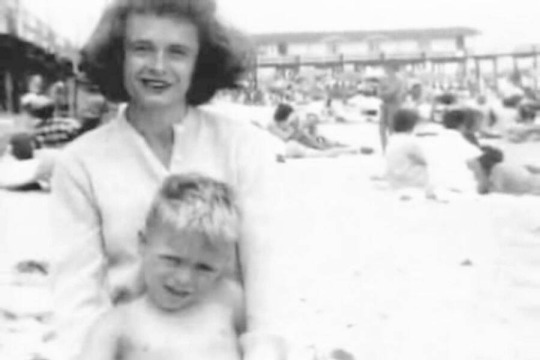
Theodore Robert Cowell, was born on November 24th, 1946 to Eleanor Louise Cowell at the Elizabeth Lund Home for Unwed Mothers. Eleanor was known by Louise and Ted’s father’s identity is unconfirmed. His birth certificate states Lloyd Marshall, a salesman and Air Force veteran, as his father. Louise claims his father to be an old war veteran known as Jack Worthington, this is who the King’s County Sheriff’s Office has listed as such. A few family members believe that Louise’s father, Samuel Cowell, could’ve been Ted’s father but no evidence has been found to support this claim.
Ted was raised in Philadelphia, Pennsylvania by his maternal grandparents for the first three years of his life. He, family, and friends, were told that his grandparents were actually his parents and that his mother was his older sister in order to protect them all from the stigma of birthing a child out of wedlock. There are variations of how Bundy found out his true parentage. A past girlfriend was told that Bundy was shown his birth certificate by a cousin, Stephen Michaud and Hugh Aynesworth (both biographers) were told by Bundy that he found the certificate himself. Anne Rule (biographer and crime writer, who knew Bundy personally) believes he did not find this information until 1969. In 1950, Louise changed her surname from Cowell to Nelson and left Philadelphia to live with cousins Alan and Jane Scott in Tacoma, Washington. In 1951, Louise met Johnny Culpepper Bundy at an adult singles night at Tacoma’s First Methodist Church. Johnny and Louise later married that year and Johnny formally adopted Ted. Johnny and Louise went on to have four children together, and whilst Johnny tried including Ted on family trips and outings, he remained distant.

Teenage Ted Bundy
In 1965, Ted graduated from Woodrow Wilson High School and enrolled in the University of Puget Sound where he spent a year before transferring to the University of Washington to study Chinese. In 1967, he became involved romantically with a UW classmate, most commonly known as Stephanie Brooks in biographies. In 1968, he dropped out of college and worked at a series of minimum wage jobs; even working as Arthur Fletcher’s bodyguard and driver during his Lieutenant Governor campaign. Brooks then ended their relationship due to Bundy’s lack of ambition. He also took one semester at Temple University after returning back to Arkansas and Philadelphia to visit family. In 1969, Ted moved back to Washington where he met Elizabeth Kloepfer (also known in Bundy literature as Liz Kendall, Beth Archer, or Meg Anders).

Ted Bundy & Elizabeth Kloepfer
In 1970, Ted re-enrolled at the University of Washington as a psychology major. During this time he became an honor student and was well regarded by his professors. In 1971, he took a job at Seattle’s Suicide Hotline Crisis Center, where he met Anne Rule who noted nothing disturbing or abnormal about Bundy. In early 1973, despite his average law school admission scores, he was granted admittance to UPS and the University of Utah. In 1973, he rekindled his relationship with Stephanie Brooks. He also continued to date Elizabeth Kloepfer. Neither woman knew of the other at this time. During this time period, Brooks had flown in several times to stay with him in Seattle. He had discussed marriage with Stephanie and had also introduced her as his fiancee at a point. In 1974, he abruptly broke off all contact. He did not return phone calls or letters. After a month of trying, Brooks was finally able to contact Bundy by phone, asking why he had so abruptly ended the relationship without an explanation. He responded with, “Stephanie, I have no idea what you mean.” and hung up the phone. She never heard from him again after that. He had just wanted to prove to himself that he could marry her in retaliation of her ending their former relationship before.
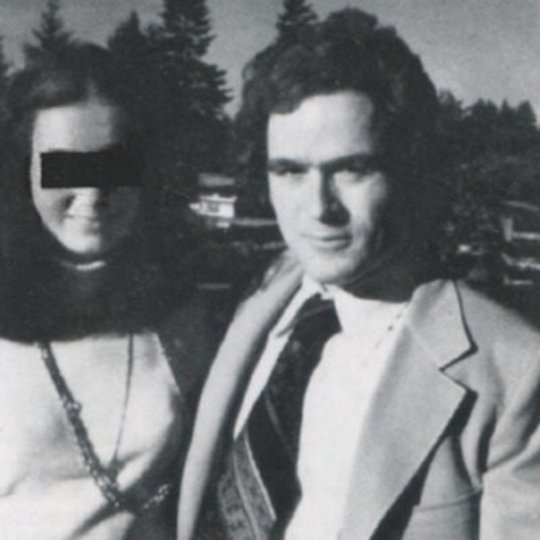
Ted Bundy and Stephanie Brooks
Ted had been skipping classes in law school by this point and had stopped attending all together by april when the first series of murders were reported. Circumstantial evidence points Ann Marie Burr, an 8-year-old girl, as one of Bundy’s first victims in 1962.
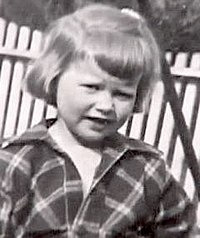
Ann Marie Burr, age 8
Washington/Oregon Murders
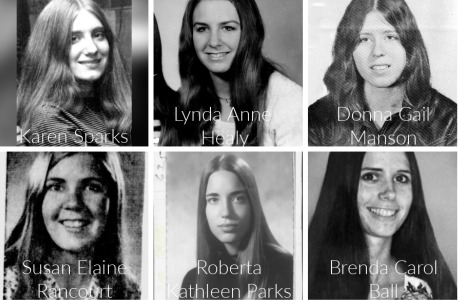

College aged young women started to disappear at a rate of about one a month in Washington and Oregon. On January 4th, 1974, shortly after midnight, Bundy snuck into the basement apartment of 18-year-old Karen Sparks (also known as Joni Lenz, Mary Adams, or Terri Caldwell in Bundy literature). He bludgeoned her with a metal rod from her bed frame and then sexually assaulted her with the same rod. She was unconscious for 10 days but survived. She sustained major permanent physical and mental disabilities. In the early morning of February 1st, 1974, Bundy broke into the basement bedroom of Lynda Anne Healy. He beat her until she was unconscious, dressed her in a white blouse, blue jeans, and boots and carried her away from the scene. On March 12th, 1974, Donna Gail Manson, a 19-year-old student at the Evergreen State College in Olympia went missing as she left her dorm to attend a jazz concert that she would never attend. April 17th, 1974, Susan Elaine Rancourt disappeared from Central Washington State College, on her way back to her dorm after an advisors meeting. Two female students later came forward with encounters with the same man. One was on the night of Susan’s disappearance and the other was three days before that. The man had his arm in a sling and had asked the girls for help loading his books into a brown or tan Volkswagen beetle. In Corvallis at Oregon State University, on May 6th, 1974, Roberta Kathleen Parks, left her dormitory to meet friends for coffee and she never arrived.
Police precincts were growing more and more concerned with each abduction. As they had no evidence or connection between each of the girls besides they were all young, attractive, college-aged, white women with their brown hair parted down the middle. On June 1st, 1974, Brenda Carol Ball, disappeared from the Flame Tavern in Burien, near the Seattle-Tacoma International Airport. She had last been seen in the parking lot with a brown-haired man with his arm in a sling. Not too long after that, on June 11th, 1974 Georgann Hawkins disappeared walking down a brightly lit alleyway between her boyfriend’s dormitory and her own sorority house. After Georgann’s disappearance was made public in the media, witnesses came forward reporting that they saw a man that night in an alley behind a nearby dormitory. He was on crutches with a leg cast and was struggling to carry a briefcase. Another witness had said that the man actually asked for her help. At this time Ted was working in Olympia as the Assistant Director of the Seattle Crime Prevention Advisory Commission. He wrote pamphlets for women on rape prevention here. He also later worked at the Department of Emergency Services (DES), which helped look for the missing women. This is where he met Carol Anne Boone, and began dating her (as well as Elizabeth Kloepfer).
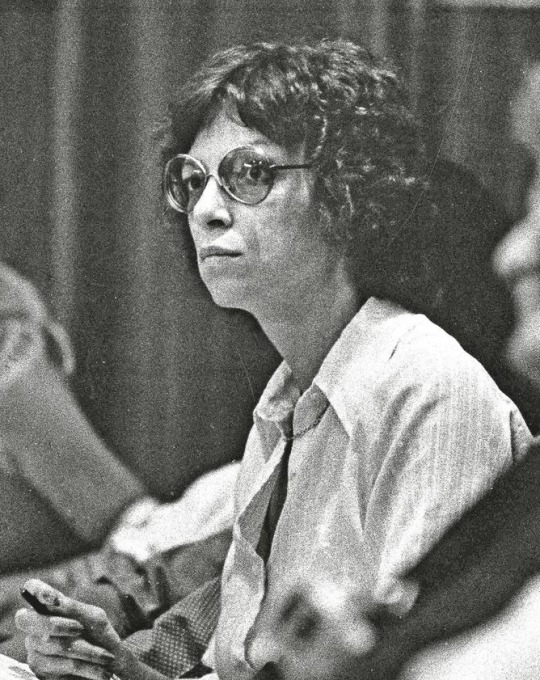
Carol Anne Boone
Pressure was immense on law enforcement at this time. This was very frustrating as panic spread through young women of the area, with six disappearances and one brutal beating. Rates of hitchhiking in young women dropped drastically. Police could not provide reporters with what little information they had because they did not want to compromise the investigation. Similarities between the victims were noted by the police in their investigations: The disappearances all took place at night, each disappearance was usually near ongoing construction work, also within a week of midterm or final exams. Every single victim was wearing slacks or blue jeans; and at most crime scenes, there were sightings of a man wearing a cast or a sling, and driving a brown or tan Volkswagen Beetle. On July 14th, 1974, five female witnesses on a beach at Lake Sammamish State Park in Issaquah, Washington, described an attractive man in a white tennis outfit with his arm in a sling. They also described him speaking in a light accent, possibly Canadian or British, and was introducing himself as Ted. He asked for their help in unloading a sailboat from his Volkswagen beetle. Four of the girls refused but one accompanied him to the point of the car in view. When she did not see a sailboat, she fled the area. Three other witnesses saw the man, now known as Ted, saw him approach Janice Ann Ott. He fed her the sailboat story and she was seen leaving the beach with him. Four hours after Janice’s disappearance, Denise Marie Naslund, vanished after leaving a picnic to use the restroom.
Idaho/Utah Murders and Kidnappings

In August 1974, Ted moved to Salt Lake City, Utah, after receiving a second letter of acceptance from the University of Utah Law School. He continued to call Elizabeth Kloepfer as he lived in Salt Lake, but dated at least a dozen other women at the time. On September 2nd, 1974, Ted abducted, raped, and murdered a still unknown hitchhiker in Idaho. On October 2nd, 1974, Ted kidnapped 16-year-old Nancy Wilcox from Holladay, a suburb of Salt Lake City. On October 18th, 1974, The daughter of the police chief of Midvale, Melissa Anne Smith, vanished after leaving a pizza parlor. Her body was found nine days later, nude, in a mountainous area. Postmortem reports say she may have remained alive for up to seven days after her disappearance. On October 17th, 1974, Laura Ann Aime disappeared after leaving a cafe around midnight. Her body was found by hikers, nine miles northeast of American Fork Canyon on Thanksgiving Day. Both, Melissa and Laura had been beaten, raped, sodomized, and were strangled with nylon stockings. November 8th, 1974, Ted approached Carol DaRonch, introduced himself as Officer Roseland and used the story of someone attempting to break into her car and to accompany him to the police station to make a report. When Carol pointed out that he was not going to the police station, he immediately pulled over to the shoulder of the road and tried to handcuff her. In their struggle, he accidentally handcuffed both cuffs to the same wrist. Carol was able to throw the door open and escape because of this. On the same evening, Debra Jean Kent disappeared after leaving a theater production to pick up her brother. The school's drama teacher and a student told police that "a stranger" had asked each of them to come out to the parking lot to identify a car. Another student later saw the same man pacing in the rear of the auditorium, and the drama teacher spotted him again shortly before the end of the play. Outside of the auditorium, investigators were able to recover a key that unlocked the handcuffs on Carol DaRonch’s wrists.
In November, Elizabeth Kloepfer called King County police for the second time, after reading about the string of disappearances and murders in the towns surrounding Salt Lake. Bundy had risen considerably as a suspect among the King County Police, but the most reliable witness from Lake Sammamish could not identify in a photo lineup. In December, Elizabeth called the Salt Lake City police with her suspicions. Ted was then added to their list of suspects, but there were no credible forensic links to put him at any of the Utah crimes. In January of 1975, Ted returned to Seattle and stayed a week with Elizabeth. She did not tell him she had reported him to the police on three occasions. She also made plans to visit him in August of 1975 in Salt Lake. Unfortunately, Ted’s crimes moved to Colorado at this point.
Colorado/Utah/Idaho Murders

January 12th, 1975, Caryn Eileen Campbell disappeared walking down a well lit hallway between the elevator and her room at the Wildwood Inn in Snowmass Village, Colorado. Her body was found a month later on a dirt road next to the resort, nude. On March 15th, 1975, Julie Cunningham disappeared while walking to a dinner date with a friend from her apartment. April 6th, 1975, Denise Lynn Oliverson vanished while riding her bicycle to her parents house. Her bike and sandals were found near a railroad bridge in a viaduct. May 6th, 1975, Ted was able to lure 12-year-old Idaho native from Alameda Junior High School, Lynette Dawn Culver, to his hotel room in Salt Lake City, where he drowned and raped her. He disposed of her body in possibly the Snake river north of Pocatello. In Mid-May, three of Ted’s coworkers from DES came to stay with him for a week. This included Carol Anne Boone. They stayed for about a week. Subsequently, Ted visited Elizabeth Kloepfer in early June. They discussed getting married the following Christmas. She again made no comments about her talking to police on several occasions. Ted also did not disclose his ongoing relationship with Carol Anne Boone or his relationship with a Utah law student known as both; Kim Andrews or Sharon Auer. June 28th, 1975, Susan Curtis disappeared from the campus of Brigham Young University, forty-five miles south of Salt Lake City. In August of 1975, Ted was also baptized into The Church of Jesus Christ of Latter Day Saints although he did not follow any of the religious practices and was not an active participant in services.
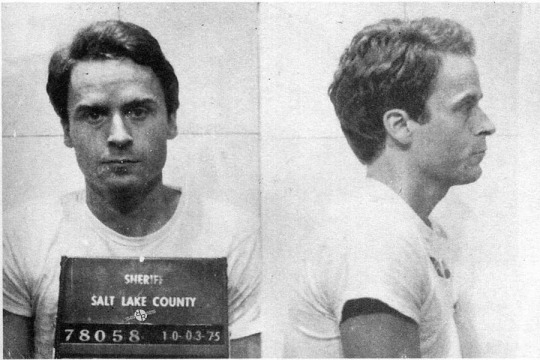
On August 16th, 1975, Officer Bob Hayward of the Utah Highway Patrol, arrested Ted in Granger. This was another suburb of Salt Lake City. Hayward had observed him cruising the residential area in the pre-dawn hours. Ted then fled the area at high speeds after seeing Hayward’s patrol car. After noticing the front passengers seat was removed and placed on the back seat, the car was searched. Hayward found a ski mask, another mask fashioned from pantyhose, a crowbar, handcuffs, trash bags, rope, an ice pick, and other burglary tools. Ted had said that the mask was for skiing, he found the handcuffs in the dumpster, and the rest were household items. Detective Jerry Thompson remembered a similar looking suspect and car description from Carol DaRonch’s attempted kidnapping. Police then searched Bundy’s apartment and were able to turn up a guide to Colorado’s ski resorts with a checkmark next to the Wildwood Inn. They were also able to find a brochure for Viewmont High School play in Bountiful where Debra Kent disappeared. They although did not find enough evidence to detain Ted and he was released on his own recognizance. Ted claimed later that investigators missed his collection of polaroid photos of his victims and he destroyed them after his release. Salt Lake police placed Ted under a 24 hour surveillance.


Detective Thompson flew to Seattle with two other detectives to interview Elizabeth Kloepfer. Elizabeth told them that in the year prior to Ted’s move to Salt Lake, she had discovered things that she "couldn't understand" in her house and also in Ted's apartment. The items she found included crutches, a bag of plaster of Paris that he had admitted stealing from a medical supply house, and a meat cleaver that was never used for cooking. Additional things she found included surgical gloves, an Oriental knife in a wooden case that he just kept in the glove compartment of his car, and a sack full of women's clothing. Ted was so far into debt, that Elizabeth suspected that he had stolen almost everything of significance that he owned. When she confronted him over a new TV and stereo, he warned her, "If you tell anyone, I'll break your fucking neck.” Elizabeth then mentioned that she would find Ted looking at her body with a flashlight under the covers on more than one occasion, and that he would get very upset if she mentioned cutting her hair. Which was long, brown, and parted in the middle. Detectives interviewing Elizabeth were able to confirm that Ted was not with her on any of the nights where the Pacific Northwest disappearances occurred. This is where Elizabeth learned about Stephanie Brooks and their brief engagement in 1973. In September, Ted sold his beetle to a Midvale teenager, but Utah police impounded it and dismantled it. They were able to find matching hair samples from Caryn Campbell. They also found “microscopically indistinguishable” hair strands from Melissa Smith and Carol DaRonch. On October 2nd, 1975, Police put Ted into a lineup and Carol DaRonch was able to identify him as Officer Roseland. Other witnesses were able to identify him as the stranger from the auditorium at Viewmont High School. He was able to be charged with aggravated kidnapping and attempted criminal assault in Carol DaRonch’s case. He was released on $15,000 bail, which was paid by his parents. He continued to live with Elizabeth Kloepfer during this time.
In February 1976, Ted stood trial for Carol DaRonch’s kidnapping. He waived his right to trial by jury because of the negative views surrounding the case and opted for a bench trial. After a four day trial, and a weekend of deliberation, Ted was found guilty of kidnapping and assault. In June he was sentenced to one to fifteen years in the Utah State Prison. In October, he was found hiding in bushes in the prison yard carrying an "escape kit". This included road maps, airline schedules, and a social security card. He spent several weeks in solitary confinement for this. Later in October, Colorado authorities charged him with Caryn Campbell's murder. He waived his right to extradition and was transferred to Aspen in January 1977.

June 7, 1977, Ted was transported from the Garfield County jail in Glenwood Springs to Pitkin County Courthouse in Aspen for a preliminary hearing. He waived his right to a court appointed attorney and opted to serve as his own, and as such, was excused by the judge from wearing handcuffs or leg shackles. During a recess of the trial, he asked to visit the courthouse's law library to research his case. While out of view from his guards, behind a bookcase, he opened a window and jumped to the ground from the second story. He managed to injure his right ankle in the process as he landed. He shed the outer layer of his clothing. He walked through Aspen as roadblocks were being set up on its outskirts after noticing his disappearance, then hiked southward onto Aspen Mountain. Near the summit of the mountain, he broke into a hunting cabin. He was able to steal food, clothing, and a rifle. The following day he left the cabin and continued south toward the town of Crested Butte. Although, during this time he had managed to get lost in the forest. For two days he wandered aimlessly in the mountain forest, missing the two trails that led downward to his intended destination. On June 10th, 1977, he broke into a camping trailer on Maroon Lake, taking food and a ski parka; instead of continuing southward, he walked back north toward Aspen, eluding the roadblocks and search parties along the way. Three days later, he stole a car at the edge of an Aspen Golf Course. He drove back into Aspen, where two police officers noticed his car weaving in and out of its lane and pulled him over. He had been a fugitive for six days.
Back in jail at Glenwood Springs, Ted again ignored legal advice to stay put (not to try to escape again). It was said that the case against him, already weak at best, was deteriorating steadily as pre-trial motions consistently resolved in his favor and significant bits of evidence were ruled inadmissible. A quote stating, "A more rational defendant might have realized that he stood a good chance of acquittal, and that beating the murder charge in Colorado would probably have dissuaded other prosecutors... with as little as a year and a half to serve on the DaRonch conviction, had Ted persevered, he could have been a free man.” had shown that. But instead, Ted assembled a new escape plan. He acquired a detailed floor plan of the jail and a hacksaw blade from other inmates, and collected $500 in cash. This was smuggled in over a six-month period, by visitors, Mostly Carol Boone. During the evenings, while other prisoners were showering, he sawed a hole about one square foot, between the steel reinforcing bars in his cell's ceiling and, having lost 35 pounds, he was able to wriggle through it into the crawl space above. In the weeks that followed, he made several “practice runs”, exploring the space. Multiple reports from an informant of movement within the ceiling during the night were not investigated. By late 1977, Bundy's impending trial had become very high flying in the media in the small town of Aspen. Ted then filed a motion for a change of venue to Denver. On December 23rd, 1977, the Aspen trial judge granted the request, but he was sent to Colorado Springs, where juries had historically been hostile to murder suspects. On the night of December 30, with most of the jail staff on Christmas break and nonviolent prisoners on furlough with their families. Bundy piled books and files in his bed, covered them with a blanket to simulate his sleeping body, and climbed into the crawl space. He broke through the ceiling into the apartment of the chief jailer, who had been out for the evening with his wife. He changed into street clothes from the jailer's closet, and literally walked out the front door to his freedom.
Florida Murders and Assaults

Ted arrived in Tallahassee, Florida on January 8th, 1978, and rented a room under the alias of Chris Hagen at the Holiday Inn. Here Bundy tried to find work and leave his criminal past behind, thinking he’d be able to remain free if he didn’t bring police suspicion onto himself. He then was forced to leave his only job application after being asked to provide identification. He reverted to shoplifting and stealing credit cards from women’s wallets out of shopping carts. On January 15th, 1978, he entered Florida State University’s sorority Chi Omega. Starting at 2:45am, he bludgeoned Margaret Bowman and then garoted her with a nylon stocking. He moved on to Lisa Levy’s bedroom, who was beaten unconscious, strangled her, tore one of her nipples, bit deeply into her left buttock, and sexuallly assaulted her with a hair mist bottle. In the bedroom adjoining Lisa's, he attacked Kathy Kliener. He had broken her jaw and had a deep laceration on her shoulder. Karen Chandler was also attacked in her bedroom, she suffered a concussion, loss of teeth, a broken jaw, and a crushed finger. Kathy and Karen both survived and attributed their survival to the attacker being scared off by headlights illuminating through the window. The whole attack happened within fifteen minutes with thirty witnesses in earshot who seemingly heard nothing. Shortly after leaving the sorority, Ted broke into the basement apartment of Cheryl Thomas, eight blocks away. He dislocated her shoulder and fractured her jaw and skull in five different places during this attack.

On February 8th, 1978, he approached the daughter of Jacksonville chief of Police, 12-year-old Leslie Parmenter, introducing himself as “Richard Burton, fire department”. He only backed off when challenged by Leslie’s older brother who had shown up to pick her up. That day, he backtracked to Lake City. February 9th, 1978, at Lake City Junior High, 12-year-old Kimberly Dianne Leach was summoned to retrieve a forgotten purse in her homeroom class and was never seen afterwards. Her mummified remains were found seven weeks afterwards in a pig farrowing shed near Suwannee River State Park. It appears she had been raped (her underwear was found near the body with semen in them) and her throat had been slit. On February 12th, 1978, Bundy could not pay his rent and had the growing suspicion that police were closing in on him, he decided to flee Tallahassee. Three days later he was apprehended by Pensacola officer, David Lee, near the Alabama border. In Miami, June of 1979, Ted stood trial for the Chi Omega killings and assaults. The jury deliberated for less than seven hours before convicting him on July 24, 1979, of the Bowman and Levy murders, three counts of attempted first degree murder and two counts of burglary. In January 1980, six months after his first Florida convictions, Ted stood trial in Orlando for the kidnapping of Kimberly Dianne Leach. After less than eight hours of deliberation, Ted was found guilty again. During the penalty phase of his trial, Bundy took advantage of an obscure Florida law; providing that a marriage declaration in court, in the presence of a judge, constituted a legal marriage. As he was questioning former Washington State DES coworker Carole Ann Boone, who had moved to Florida to be near Bundy, had testified on his behalf during both of his trials, and was again testifying on his behalf as a character witness, asked her to marry him. She accepted, and Bundy declared to the court that they were legally married. February 10th, 1980, Ted’s was sentenced to death by electrocution for the third time. In October of 1981, Carol Anne Boone, gave birth to a daughter and named Ted Bundy as the father.
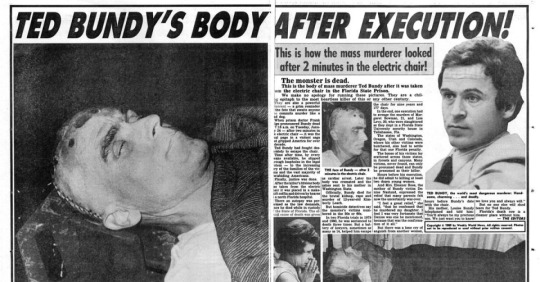
Ted Bundy died by the Raiford electric chair at 7:16 a.m. EST on January 24, 1989. Hundreds of revelers sang, danced and set off fireworks in a pasture across from the prison as the execution was carried out, then cheered as the white hearse containing Bundy's corpse departed the prison. He was cremated in Gainesville, Florida and his ashes scattered at an undisclosed location in the Cascade Range of Washington State, in accordance with his will.
18 notes
·
View notes
Text
The Weepy Voiced Killer
TW: Crime Scene Photos, link to 911 calls
At Midnight on December 31st, 1980, police in St. Paul, Minnesota received a phone call detailing a murder. The voice was the first of many calls they would receive throughout the next few years, guiding them to Malberg Manufacturing Company machine shop because there was “a girl hurt there.” Upon police arrival, they found the body of 20-year-old, Karen Potack. The scene was grotesque in nature. She was lying naked in the snow and had been bludgeoned more than 10 times with a tire iron. She had been beaten to the point her skull was cracked open, exposing her brain; but she miraculously survived. Potack had apparently come into the city for a New Year’s Eve party with her sisters, leaving around midnight. She then wandered around the city intoxicated when she crossed paths with her assailant. Her injuries were so bad that she sustained multiple brain injuries and could not identify her attacker.

On June 3rd, 1981; a group of teenage boys found the body of 18-year-old, Kimberly Compton. The assailant later contacted Police in St. Paul again, pleading on the phone call: “God damn, will you find me? I just stabbed somebody with an ice pick. I can’t stop myself. I keep killing somebody.” His strange— almost weepy— voice in both calls, dubbed him the Weepy Voiced Killer in the media. Upon arriving at the scene, they discovered 18-year-old, Kimberly Compton. She was stabbed 61 times with the ice pick. Investigators were able to successfully trace the call to a pay phone across from a bar on the corner of St. Peter Street and the Bus Depot on 9th. Two days after the discovery of her body, police received another call; stating that he didn’t mean to kill Compton and that he would try not to kill anyone else. Part of the tape was released to the public in hopes that someone would be able to identify the voice. But the police lines were flooded with calls, which none seemed to be useful in identifying the man.
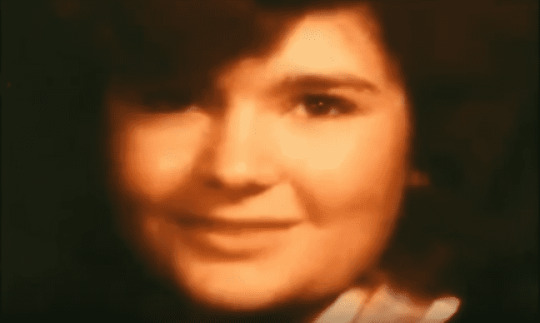
On July 21st, 1982, Carol Kellogg had driven to her best friend, Kathleen Greening’s, home in Roseville. They were scheduled to leave St. Paul on a vacation to Macinac Island. Carol had knocked on the door and let herself in when nobody answered the door. She called out for Kathleen and began to search room by room when there was no answer. Kellogg discovered Kathleen Greening’s body face up in the bathtub with her knees bent towards the front of the tub. Initially, her death was ruled as an accident. It wasn’t until years later, that her actual murdered would be linked to her case.
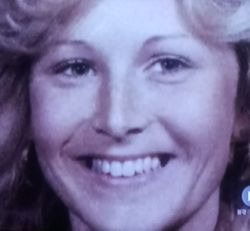
On August 6th, 1982, another body was found by a newspaper carrier on his route along the Mississippi River and 29th Street. She had been stabbed to death, and was identified as 40-year-old, Barbara Simons. The night before she had been at a bar called, the Hexagon. Simons apparently had offered a man she had met at the bar a cigarette and had told the waitress, “He’s cute. I hope he’s nice, since he’s giving me a ride home.” Again, the police received a call from the weepy voiced man, saying; “Please don’t talk, just listen… I’m sorry I killed that girl, I stabbed her 40 times. Kimberly Compton was the first, over in St. Paul.” Police wanted to talk to the man that had given Barbara a ride home the night before (August 5th, 1982). Witnesses described him as being in his 40’s, around 6 feet tall and 185 pounds. He was also said to have a dark complexion and receding black hair.
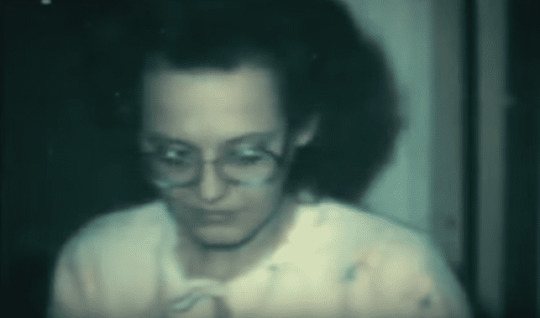
As police attempted to track the man down, another victim was attacked. On August 21st, 1982, 21-year-old, sex worker, Denise Williams was approached by an unidentified man and the two arranged a price for her services. Denise then hopped into his car, she recalls him finishing very quickly and thinking that he may want to do something else after a few moments. She had noticed the man had turned onto a dead-end road, driving through a dark and suburban area, and realized her life was in danger. She says that she then began to look around after realizing that she did not have a weapon with her. She saw a glass bottle lying at her feet and thought she would use that if he tried anything. The man lunged at her with a screwdriver and stabbed her a total of 15 times before she was able to process what was happening. William’s then reached for the glass bottle lying on the floor of the car and smashed the man over the head with it, causing him cuts to the hand and face. Which undoubtedly saved her life as she was able to flee his car. Denise’s screams drew the attention of a nearby man who was able to wrestle with him, but ultimately caused the man to flee the scene. The man then returned to his apartment and decided his wound needed medical attention. He phones the St. Paul fire department, who discovered “aural similarities” to the man who had been calling police about the killings in the area.

The man was identified as 37-year-old, Paul Michael Stephani. He grew up in Austin, Minnesota and moved to St. Paul in the 60’s. He had worked as a hospital janitor and a shipping clerk. He was not able to keep a job and blamed his epilepsy, which he apparently suffered from an older job. After losing his employment at Malberg, he returned to the area around the site full of anger. This is where he met Karen Potack. Stephani said, “When I picked her up, she had no jacket and I thought I’d take her for a cup of coffee. I just wanted to warm her up and I guess my mind snapped or something.” Stephani was arrested and charged with attempted second-degree assault and with the murder of Barbara Simons. There was not enough evidence to charge him to the other murders. During the trial of Simons’ muder case, Stephani's ex-wife, sister, and a woman who lived with him testified that they believed the hysterical caller revealing the attacks was Stephani. Those observations, alone, were not enough to identify Stephani as the Weepy-Voiced Killer since the hysterical crying distorted the voice. He was sentenced to 40 years in prison.
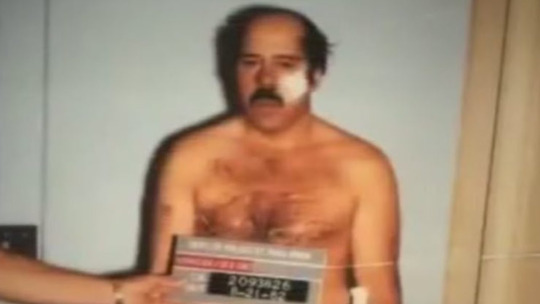
In 1997, years after his arrest, Paul Stephani confessed to the murder of Kim Compton after discovering he only had a year to live due to skin cancer. He also confessed to the murders of Barbara Simons and Kathleen Greening. Although he was charged in Simons murder, he had never outrightly confessed to it. He was also never a suspect in Kathleen’s killing, but he was able to provide intimate details of the murder that only the killer would know. Furthermore, they were able to find the name, “Paul S.” in Kathleen’s address book with Stephani’s number. He also confessed to the beating of Karen Potack in 1980.


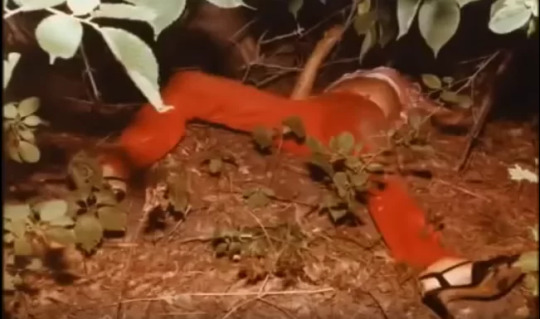
In 1998, Paul Stephani died at the Oak Parks Heights Maximum Security Prison.
911 Calls: https://www.youtube.com/watch?v=G9tZewM5LlE
104 notes
·
View notes
Text
The Death of Angela Samota
TW: crime scene photos

Angela Marie Samota was born on September 19th, 1964 in Almeda, California to Frank and Betty Ruth Samota. Angie was the youngest of five children. She had enrolled at Southern Methodist University in Dallas, Texas. She also belonged to the Zeta Tau Alpha sorority and was studying computer science and electrical engineering.
The night of October 12th, 1984; 20-year-old, Angie and two of her friends, Russell Buchanan and Anita Kadala, had decided to go to the State Fair of Texas. Angie’s boyfriend, Ben McCall, according to police reports, was unable to join due to having to be up early for a construction job. The three friends spent most of their evening at the Rio Room dance club (they stayed until after midnight). According to Russell’s testimony, Angela was going from table to table talking and “seemed to know everyone”. She had driven Russell home and dropped him off around 1am and shortly after, dropped Anita off at her own home. Buchanan’s apartment was about a five minute walk from Angie’s condo. Before heading home, she stopped by McCall’s to say goodnight. He testified that he had gotten a call from Angie around 1:45am saying that there was a man in her house that had asked to use the bathroom and the phone. She did not say if the man was already there or if she had allowed him access into her home. She had asked him to talk to her and after a few moments had said she would call him back and hung up. Once he did not receive a phone call back from Angela, he called her back. When no one answered the phone, he drove over to Angie’s apartment and there was no response to the knock on the door and the door was locked. Luckily, he had an early-generation mobile phone with him and was able to ring an information line who got him connected to the police.
Rookie officer, Janice Crowther, answered the call. At 2:17am on October 13th, 1984 Police arrived at Samota’s apartment. It was reported that Angie’s Toyota Supra was in the drive but there was no movement inside of the home. Crowther was able to get Angela’s keys from the apartment manager. Crowther said that she had seen Samota’s shoes sitting in the kitchen. She claims she heard her partner say “Hey Janice, I found her.” from the bedroom. Upon entering the room, they came across the crime scene. Angela’s bloody body was stretched naked across her bed, with both legs hanging off the side, and her eyes were open. Her heart had practically been cut out from the eighteen stab wounds as she endured. It’s recounted that her heart was lying on top of her chest. There was a stuffed rabbit beside her body.

Police first suspected Russell, who had gone out with Anita and Angie on the night in question. In Russell’s testimony he claimed that he had gone to sleep after being dropped off at home. He was 23 at the time and lived in Lower Greenville. Ben McCall was also a suspect. An ex-boyfriend of Angela’s, from her hometown of Abilene, was also a suspect, as in a fit of rage he cut up Angela’s clothes and threatened her with a knife. During the investigation, autopsy authorities concluded that Angela’s attacker was a “non-secretor” which meant that there was no blood in his secretions (blood and saliva). Russell Buchanan was a non-secretor. This excluded McCall and the ex-boyfriend. Sheila Wysocki, then Gibbons, was determined in helping with the case. She was asked questions about Angela and was told to ask others about the case and report anything she found out back to the police. She was asked to have dinner with Russell to see if his story matched up, in which Wysocki believes that it did. She told investigators that he had traveled to Houston to see his parents later that weekend and had not even heard of the murder until he had gotten back into town. Which is what he told police. Buchanan also took a lie detector test early in the investigation and passed. Even though Buchanan remained a suspect, they never gained the evidence they needed to indict him on the murder and he eventually moved out of the country for graduate school. Sheila ended up dropping out of school and felt as if she was haunted over the next 20 years about Angela’s murder. The case went cold.
Wysocki recalls, in 2004 whilst she was reading passages from the Book of Daniel, Angela appeared to her in a vision and she knew it was time to try and get her case reexamined. She told People magazine that she called Dallas police some 750 times over the next few years and badgered them about reexamining the case. In this time she got her P.I. license and worked her way up from cheating, stalking, and cyber-bullying cases to cold case murders. In 2006, Linda Crum was tasked with the case. Crum pulled blood, semen, and fingernail samples to be DNA tested, a luxury that was not had at the time of the case originally. In 2008, the DNA results came back and it was traced to a man named, Donald Bess.
Donald Andrew Bess Jr., born September 1st, 1948 in Arkansa, was first charged in 1978 with Aggravated Rape and Aggravated Kidnapping and was let out on parole in 1984. This is when he committed Angela’s rape and muder. In 1985, Bess was sentenced in Harris County, Texas- on a case unrelated to Samota’s- to life imprisonment on charges of one count of aggravated rape, one count of aggravated kidnapping, and one count of sexual assault. In 2010, already serving life imprisonment but not facing a capital murder charge, Bess was tried for Angela Samota’s rape and murder. During this trial, other women had testified that they had indeed been raped by Bess. Bess’ ex-wife testified that he had been abusive to her and their child during their three year marriage from 1969 to 1972. Bess was found guilty of Angela’s murder on the basis of DNA match and was given the death penalty. He is still awaiting an execution date and is waiting his sentence out at Polunsky prison.
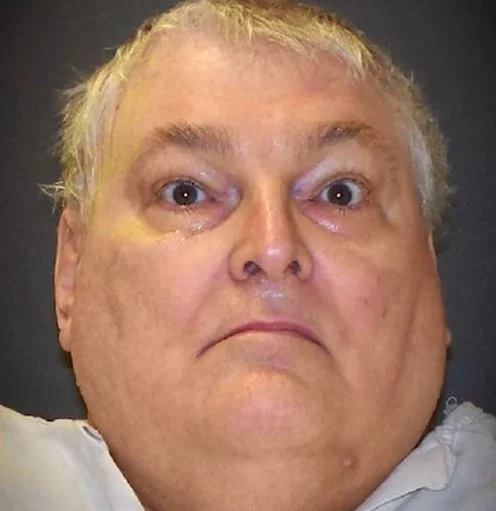
Angela’s last resting place is in Amarillo, Texas at the Llano Cemetery. Sheila continues to work as a private investigator to help other families of tragedies find out what happened to their family members.
#angela samota#true crime#true crime blog#donald bess#rape#murder#sexual assault#crime#crimescene#sheila wysocki#texas crime#dallas crime
12 notes
·
View notes
Text
The Disappearance of Etan Patz
Etan Kalil Patz, was born on October 9th, 1972 to Stanley and Julie Patz. His family lived in the SoHo neighbourhood of Lower Manhattan, New York. On the morning of May 25th, 1979, Etan walked two blocks from his home at 113 Prince Street to his bus stop at the crossroad of West Broadway and Prince Street before school. This was the first time he was ever allowed to walk alone. On this day, he was wearing a black “Future Flight Captain” pilot cap, a blue corduroy jacket, blue jeans, and blue sneakers with fluorescent stripes.

At school, his teacher noticed he had not shown up but had not reported the absence to the principal. Julie had called the police when she had noticed that Etan did not return home from school that day. Police suspicion was first turned on the Patzes, thinking they may have something to do with Etan’s disappearance but that was quickly overturned. Police began to search that evening with over 100 officers and a team of bloodhounds. This search continued for weeks and generated no leads, from even the missing children’s posters. Stanley was a photographer and had an array of portraits of Etan that were published on missing children’s posters and even shown in Times Square. Etan’s disappearance even started the missing children's movement. He was also one of the first children to have his photo displayed on a milk carton. Ronald Reagan also declared the anniversary of his disappearance, May 25th, in 1983 to be National Missing Children’s Day. His disappearance also played a role in founding the National Center of Missing and Exploited Children.

In 1985, after the case had been turned over to Assistant US Attorney General, Stuart R. GraBois, Jose Antonio Ramos was pointed as the primary suspect. Ramos was a convicted child predator who had been a friend of Etan’s former babysitter. Before this, in 1982, police were told by multiple boys that Ramos had been trying to lure them into a drainpipe in the area near where he lived. In 1990, GraBois was deputized as a deputy state attorney general in Pennsylvania. This was to help prosecute a case against Ramos for the sexual abuse ofyoung boys and to try to gather more information about Etan's case. When first questioned, Ramos stated that, on May 25th, 1979, he had abducted a young boy and taken him back to his apartment to rape him. Ramos said that he was "90 percent sure" it was Etan, due to the photos he’s seen on the tv. However, Ramos did not use Etan's name and only referred to him as “the boy on tv”. This made Ramos’ confession quite problematic since there was not a definitive link in the case. Ramos also claimed he had "put the boy on a subway" and that he had left him alive.
In 1991, while Ramos was incarcerated, an informant reclaims that Ramos bragged about knowing more about what happened to Etan. Ramos claimed he knew intimate details of Etan’s disappearance and even drew a map of Etan's school bus route, showing that he knew that Etan's bus stop was the third one on the route. This alerted police that Ramos was further involved in the case but with no substantial evidence, he could not be charged. Etan’s body was never found but he was declared legally dead in 2001. Julie and Stanley pursued and won a civil case against Ramos in 2004 where they were awarded $2 Million which they never collected. Ramos was never criminally prosecuted for the murder of Etan as there was no substantial evidence in order to do this. Every year, on Etan's birthday and the anniversary of his disappearance, Stan Patz would send Ramos a copy of his son's missing-child poster with the same message typed on the back, “What did you do to my little boy?". Ramos has adamantly denied that he killed Etan. Hedid serve a 20-year prison sentence in the State Correctional Institution in Dallas, Pennsylvania, for child molestation. He was released from prison on November 7, 2012. Soon after his release he was arrested on a Megan's Law violation.
On May 25th, 2010, Manhattan DA Cyrus Vance Jr, officially reopened the Etan Patz case. On April 19, 2012, FBI and NYPD investigators began excavating the SoHo basement of a nearby neighbor of the Patzes at 127-B Prince Street. This residence had been newly refurbished shortly after Etan's disappearance in 1979. Before, the basement had been the workshop and storage space of a handyman. After a four-day search of the property, investigators announced that there was "nothing conclusive found."

On May 24, 2012, New York Police Commissioner, Raymond Kelly, announced that a man was in custody who had implicated himself in Etan's disappearance. A law enforcement official identified the man as 51-year-old, Pedro Hernandez of Maple Shade, New Jersey. Hernandez allegedly had confessed to strangling the child. He stated in his written confession to police, "I’m sorry, I choke him." According to a 2009 book written about the case, After Etan, Etan had a dollar and had told his parents he planned to buy a soda to drink with his lunch. At the time of Etan's disappearance, Hernandez was an 18-year-old convenience store worker in a neighborhood bodega. Hernandez said that he later threw Etan's remains into the garbage. Hernandez was charged with second-degree murder. According to a New York Times report from May 25, 2012, the police at that time had no physical evidence to corroborate his confession.
In 2012, Hernandez’s brother-in-law, Jose Lopez who hails from New Jersey, reached out to investigators stating he believed that Hernandez was in fact responsible for Etan's disappearance. Statements also collected from Hernandez's sister, Nina Hernandez, and Tomas Rivera, a leader of a Charismatic Christianity group at St. Anthony of Padua, a Roman Catholic church in Camden, New Jersey, indicated that Hernandez may have publicly confessed in the presence of fellow parishioners in the early 1980s to murdering Etan. Nina claimed that Etan’s murder was “an open family secret that Pedro had confessed in church.” A grand jury indicted Hernandez on November 14, 2012, on charges of second-degree murder and first-degree kidnapping. His lawyer has stated that Hernandez was diagnosed with schizotypal personality disorder, which included hallucinations. The lawyer has also stated that his client has a low IQ of around 70, which is "at the border of intellectual disability.”
After a long gruelling process of many years, Hernandez was found guilty of kidnapping and felony murder on February 14th, 2017. Hernandez’s sentencing hearing was scheduled for February 28, with Hernandez facing up to 25 years to life in prison. However, Hernandez's attorneys were granted a temporary delay so as to be able to challenge the verdict, and no new sentencing date was set. Finally on April 18th, 2017, Pedro Hernandez was sentenced to life in prison without the possibility of parole for 25 years.
#true crime#true crime blog#crime#truecrime#missingchildren#missing kids#missing children#amber alert#cold cases#etan patz#jose antonio ramos#pedro hernandez
84 notes
·
View notes
Text
The Case of Danielle Nicole van Dam

Danielle Nicole van Dam was born on September 22nd, 1994 to Damon and Brenda van Dam. Danielle also had two older brother’s, Dylan and Derek van Dam. Her family was currently living in the Sabre Springs neighborhood of San Diego, California, but were originally from Plano, Texas. On the evening of February 1st, 2002, Brenda went out to a pub called, Dad’s, with two of her girlfriends. Damon stayed home with the three children. He put Danielle to bed around 10:30pm and she fell asleep, later going to bed himself and sleeping until 2:00am when Brenda, his wife, and four of her friends returned to the house.
Upon arrival Brenda noticed a light on the home’s security system was flashing and that the side door to the garage was open. Brenda, Damon, and the four friends chatted for approximately half an hour before the friends left to return to their own homes. The van Dam’s then went to sleep shortly after. An hour later, Damon woke up and had discovered the security light was flashing and the sliding glass door leading to the backyard was open. He shut the door and went back to sleep. In the morning, the couple discovered that Danielle was not in the home and reported her missing at 9:39am.
The search for Danielle lasted weeks and included hundreds of volunteers. On February 27th, two searchers found her partially decomposed nude body near a hiking trail in Dehesa, California. Because of the condition her body was found in, coroners were unable to determine a cause of death or if she had been sexually assaulted or not.
The Saturday morning after Danielle’s disappearance, the van Dam’s neighbors were interviewed, all except for one, David Alan Westerfield. David was a self-employed engineer who had many patents on medical devices. He was a divorcee with two college aged students. He was 49 at the time and had no criminal record. He lived two houses away from the van Dam’s in a luxury motor home. About 3 days before Danielle’s disappearance, Danielle and Brenda were invited into Westerfield’s home after selling him girl scout cookings. Brenda asked to see his kitchen, knowing it had been remodeled when selling him cookies the year before. Westerfield was almost an immediate suspect in the case, after officers having found some of Danielle’s blood around his motor home. The search for evidence was moved to Dehesa Road as it was a possible route for Westerfield to take to arrive at the desert.

Westerfield was arrested on February 22nd for Danielle’s kidnapping after blood stains were found on his jacket and in his motorhome. Westerfield pleaded not guilty and was moved to trial on June 4th, 2002. In pre-trial motions, lawyers moved to have Westerfield’s confession thrown out as he was interrogated for more than nine hours with no breaks to take a shower, eat, or sleep. And his repetitive attempts to ask for a lawyer were ignored.
The prosecution presented forensic evidence of Danielle’s blood on the dry-cleaned jacket and the floor of the motorhome. As well as her fingerprints inside of the home. There were hairs from the van Dam’s dog found on the comforter of Westerfield’s bed and Danielle’s hair on his sheets. And lastly acrylic fibers from Westerfield’s home were found on Danielle’s body. On August 21st, he was convicted of first degree murder, kidnapping, and posession of child pornography.
After the sentencing, at a news conference, legal activist Gloria Allred stated the loophole in California law; that to avoid the death penalty, Westerfield’s attorneys argued that Danielle was killed in her bed and had not been kidnapped at the time. Which would pass up the death penalty in the case. Gloria and the van Dam’s worked with State legislature to pass “Danielle’s Law” which would be a special circumstance death penalty application if a child is killed in his or her own home.
During the penalty phase of the trial, Westerfield’s niece testified that when she was 7-years-old her uncle entered his daughter’s bedroom, she had been staying the night whilst her parents were attending a party at the home, and she had woken up to him rubbing her teeth. She says she had bit him as hard as she could and then ran downstairs to tell her mother. When Westerfield was confronted, he said he had gone to check on the children and was trying to comfort her. This incident was forgotten about. The jury sentenced him to death on September 16th and in January, Judge William Mudd applied the sentence of death.
Westerfield is currently incarcerated at San Quentin and is awaiting the approval of his appeal. Because of the July 2014 ruling of the death penalty being unconstitutional in the state of California, it is not known if his execution will be carried out.
#true crime#crime#california crime#true crime blog#truecrime#danielle van dam#child abduction#kidnapping
46 notes
·
View notes
Text
The Case of Blanche Monnier
tw: crime scene photos, starvation
Blanche Monnier was a french socialite born on March 1st, 1849 to Emile and Louise Monnier. She and her family were from Poitiers, France. Her father, Emile, was the head of the local arts facility. Blanche was renowned for her physical beauty and brought on many possible suitors. Emile later passed away in 1879.

In the year of 1876, when Blanche was 25, she fell in love with a lawyer who was much older. Her mother often referred to him as “penniless” and did not want her marrying such a man of a lower class than she. Blanche’s mother, Louise, tried all she could by any means to get her not to marry him. She tried to change her mind, forbid her from marrying him, even plotted against her own daughter but nothing prevailed. In order to stop the wedding, Louise and her son, Marcel, had tricked Blanche into a room and padlocked it shut, only promising to open it again if she swore to call off the wedding to this lawyer.
Blanche’s disappearance from Paris did not go unnoticed. But when questioned, Madame Louise Monnier would always say that her daughter had gone insane (As it was a regular practice to lock up mentally ill family members in this period of time). Louise and Marcel eventually returned to their daily lives and Blanche was soon forgotten among the people of Paris. The lawyer Blanche so loved, also passed away in 1885, but this did not relent her capture and psychological torture.
In 1901, nearly 25 years after Blanche’s disappearance, the attorney general of Paris, received an anonymous note, stating; “Monsieur Attorney General: I have the honor to inform you of an exceptionally serious occurrence. I speak of a spinster who is locked up in Madame Monnier’s house, half-starved and living on a putrid litter for the past twenty-five years – in a word, in her own filth.” As expected, Police were shocked by this claim as Madame Monnier was an upstanding citizen in society. Louise Monnier was from a well-respected family and was also awarded for her generous contributions to the city by the Committee of Good Works.
On May 23rd, 1901 Officers were sent to investigate the claim at the Monnier residence. Although upon arrival, and knocking on the door Madame Monnier did not answer the door, they were able to break it down and enter the home. They searched the home and upon entering the second floor, they found a dark, foul-smelling, padlocked room. They busted the padlock off and were met with a putrid stench requiring them to pry the windows open to relieve it. Through the beam of sunlight, they found an emaciated, Blanche Monnier. She was completely naked and covered in food and feces. There were bugs all around her bed, as well as a thick crust of excrement and rotten food dried to the mattress. Vermin of all sorts (mostly rats and mice) had gathered around due to the rotting food around her. At this point, Blanche was 50-years-old and weighed only 50-55lbs. Blanche was malnourished, she lacked social contact for 25 years, and she had not been getting sunlight. It had been reported that Blanche could not speak properly and was completely delirious. One of the police on the scene commented that, “The unfortunate woman was lying completely naked on a rotten straw mattress. All around her was formed a sort of crust made from excrement, fragments of meat, vegetables, fish, and rotten bread…We also saw oyster shells, and bugs running across Mademoiselle Monnier’s bed. The air was so unbreathable, the odor given off by the room was so rank, that it was impossible for us to stay any longer to proceed with our investigation.”
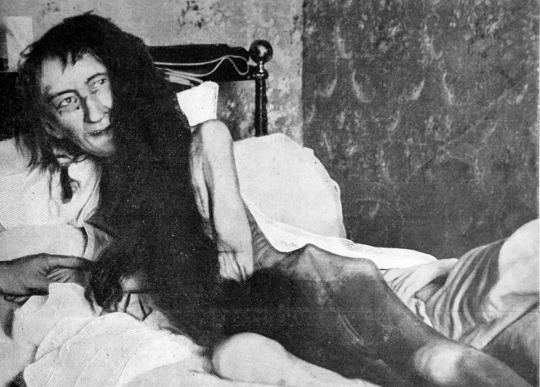
Louise and Marcel Monnier were both arrested on the scene. Whilst Marcel was later acquitted, Madame Monnier became ill and died in prison 15 days after her arrest. Before her death she admitted to the inhumane treatment of her daughter. Marcel was originally sentenced to 15 months in prison, but his acquittal was based upon the fact that he never restricted his sister’s movement. Some even believe that he had sent the anonymous note to the police. Others believe that it may have been the partner of a family servant that had sent the note in.
After her discovery, police discovered the description that Louise and Marcel had given to them, of Blanche being “angry, foul, overly excited, and full of rage,” was unfounded and not truthful. Nurses who had given Blanche a bath after her rescue have stated that she was calm and happy. It is reported that upon arrival to the hospital, she mentioned how lovely it is to breathe fresh air. After extended care she gained weight and was able to talk in short sentences. Although she never made a full recovery, she lived 12 additional years in a sanatorium in Blois, France. She passed away on October 13th, 1913.
259 notes
·
View notes
Text
The Case of April Tinsley
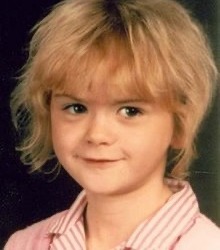
April Marie Tinsley was born March 18, 1980. She lived with her mother and father, Janet and Michael Tinsley, in Fort Wayne, Indiana. April had a twin who passed in the womb months before her birth.
April was last seen alive on April 1st, 1988, when she was 8 years old. She and her friends had been playing in between houses and around 3pm, she had gone to retrieve her umbrella from the previous house. Janet Tinsley, April’s mother, had reported her missing to the Fort Wayne police when she did not return for dinner that evening. Later, a witness said she had seen a man in his 30’s drag April into a blue pickup truck after she was leaving the friend’s to retrieve her umbrella.
The initial search for April included about 250 Fort Wayne police officers and 50 volunteers. 3 days later, April’s body was found in a ditch 20 miles from her abduction site in Spencerville, Indiana (DeKalb County) by a jogger. Near the site where her body was found, investigators had found one of her shoes and a plastic shopping bag with a sex toy inside of it. Her autopsy revealed she had been sexually assaulted and then strangled to death. It was also revealed that she had been deceased for about one to two days and she had only been in the ditch for about 4 hours before her body was discovered. April’s memorial service was held on April 8th, 1988.
Early on in the investigation, police questioned a 34 year old suspect who was linked to another child molestation case who was acquitted of those charges in the following month and was no longer considered a suspect in Tinsley’s case. About 90 members of the Fort Wayne community formed APRIL (Associated Parents Regional Independent League, or later Abduction Prevention Reconnaissance and Information League). The case proceeded to go cold for a few years after that.
On May 21st, 1990; police were alerted to a taunting message left on the wall of a barn in St. Joseph Township. The message was littered with misspellings and read; “I kill 8 year old April Marie Tisley I will Kill agin.” The message was also written in crayons that were found at the scene. Initially investigator’s started to believe that Tinsley’s case was related to the murder of 7-year-old, Sarah Jean Bowker, but was ultimately determined to be unrelated. Again, after the discovery of this note, the case seemed to go cold for another 14 years.
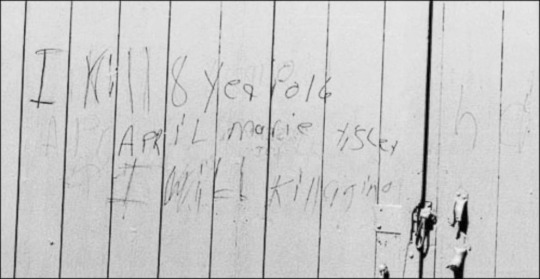
During Memorial day weekend in 2004, four notes were found to be written by April’s killer. Three of these four notes were left on young girl’s bicycles and one was left in a mailbox. Three notes were placed in plastic shopping bags, just as the bag was found near April’s body 16 years before. The notes were placed in the bags along with used condoms and polaroid photos of a man’s lower half masturbating. All of these notes were left on yellow lined paper with the same handwriting and misspellings as the original note found on the barn wall did. One of the note’s read, “Hi Honey I been watching you I am the same person that kidnapped and raped and killed April Tinsley. You are my next victim. If you don’t report this to police or I don’t see this in the paper tomorrow or on the local news or I will blow up your house.” The DNA collected from the condoms and the notes was identically matched to the DNA of April’s killer.
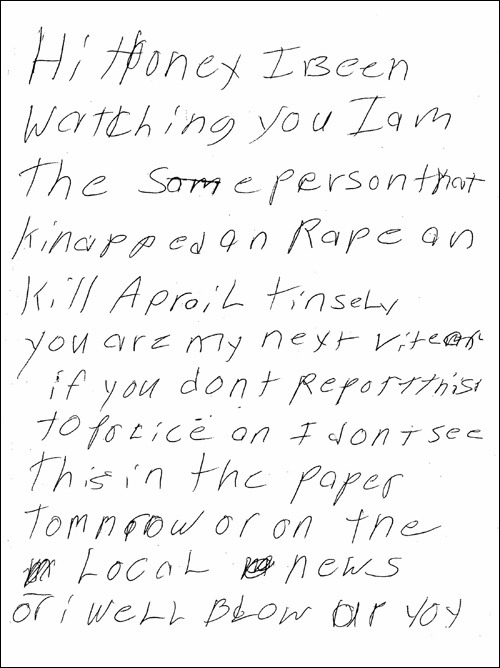
The polaroid photos were very helpful in the case, giving the first clues as to what parts of the killer’s body looked like. The photos showed that the man was circumcised, had hair on his legs, and had shown a blue and green paisley patterned bedspread. Police believed that this man either owned or borrowed the light blue pickup truck in 1988 and then owned or borrowed a green pickup truck with a matching camper shell and dark tinted windows. After these notes were left, the killer went silent for many more years. The FBI joined the case in 2009 but no major breaks were made.
In May 2018, after police had successfully used a genealogy database and DNA analysis testing to secure the capture of the Golden State Killer, Brian Martin arranged for the DNA to be tested in the April Tinsley case. This DNA testing narrowed down the suspect pool to two individuals, 59-year-old John D. Miller and his brother, on July 2nd. Police were then able to examine three used condoms from Miller’s trash and it was an undeniable match to the DNA left by the killer.
Once this match was made, police approached Miller at his home in Grabill, Indiana on July 15th 2018. His neighbors often described him as secluded and often angry. After reading Miller his rights, when investigators asked Miller why he thought officers wanted to talk to him, he replied; “April Tinsley.���

During his interrogation, Police asked Miller to explain what happened and he replied with, “I can’t.” Later admitting that he abducted April in 1988 from Hoagland Street and took her back to his trailer on Main Street in Grabill, raped her and then choked her to death, saying that it took about 10 minutes for her to die. He also admitted to raping her body and dumping her in a Spencerville ditch on the morning of April 2nd. Miller told police that he killed April because he did not want her to report him for raping her. Miller stated that he drove by the dump site once he had not seen it on the news, noticed April’s shoe was still in his car and threw it out into the ditch.
Official’s charged Miller with kidnapping, murder, child molestation, and confinement on July 19th. 2018 to which he pleaded not guilty. On December 7th, 2018 Miller changed his plea to Guilty saying he molested April and strangled her with his bare hands. He was sentenced to 80 years in prison (50 years for murder and 30 years for child molestation). He is being housed in the New Castle Correctional Facility and his earliest release date will be for July 15th, 2058.
66 notes
·
View notes